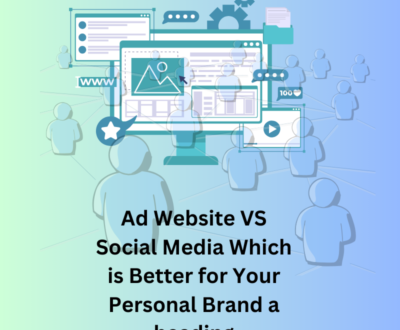Both content marketing and email marketing are powerful tools in a digital marketing strategy, but they serve different purposes and offer unique benefits. Here’s a comparison to help you understand their roles and decide which might be more effective for your goals:

Content Marketing
Purpose:
To attract, engage, and retain an audience by creating and sharing valuable, relevant content.
Key Components:
Blog posts, articles, infographics, videos, podcasts, social media posts, eBooks, and whitepapers.
Benefits:
Builds Brand Authority: High-quality content establishes your brand as an industry leader and builds trust with your audience.
Increases Visibility: Well-optimized content can improve your search engine rankings and drive organic traffic to your website.
Engages and Educates: Provides value to your audience by addressing their pain points, interests, and needs.
Generates Leads: Engaging content can attract potential customers and encourage them to provide their contact information.
Best Practices:
Focus on creating high-value, relevant content tailored to your audience’s needs.
Optimize content for search engines (SEO) to enhance visibility.
Promote content through various channels, including social media and guest posts.
Email Marketing
Purpose:
To communicate directly with your audience through targeted, personalized messages.
Key Components:
Newsletters, promotional emails, transactional emails, drip campaigns, and automated responses.
Benefits:
Direct Communication: Enables personalized and targeted communication with subscribers who have opted in to receive your messages.
High ROI: Email marketing often delivers a high return on investment due to its cost-effectiveness and the ability to track performance.
Nurtures Leads: Helps build and maintain relationships with potential and existing customers through tailored messaging and follow-ups.
Drives Conversions: Effective for promoting offers, updates, and calls-to-action that encourage immediate responses or purchases.
Best Practices:
Segment your email list to send relevant content to different audience groups
.Personalize emails based on user behavior and preferences to increase engagement.
Test and optimize subject lines, content, and sending times to improve open and click-through rates.
Conclusion
Content Marketing is best for building brand authority, driving organic traffic, and engaging your audience through valuable content. It’s a long-term strategy that helps establish your brand’s presence and thought leadership.
Email Marketing excels in direct, personalized communication, nurturing leads, and driving conversions through targeted campaigns. It’s a powerful tool for maintaining relationships with your audience and encouraging immediate action.
Combining both strategies can create a comprehensive marketing approach: use content marketing to attract and engage your audience and email marketing to nurture relationships and drive conversions.
How to Use Email Marketing to Improve Content Marketing
Email marketing and content marketing can work hand-in-hand to enhance your overall strategy. Here’s how you can leverage email marketing to boost your content marketing efforts:
. Promote Your Content
Share New Content: Use your email newsletters to inform subscribers about new blog posts, articles, videos, or other content. Include compelling summaries and direct links to drive traffic.
Highlight Key Pieces: Feature your most valuable content in your emails, such as eBooks, whitepapers, or popular blog posts, to attract more readers and generate leads.
Segment Your Audience
Tailor Content to Segments: Divide your email list into segments based on interests, behavior, or demographics. Send personalized content recommendations that match each segment’s preferences.
Increase Relevance: By targeting specific groups with relevant content, you can improve engagement rates and make your content marketing more effective.
- Nurture Leads
Automate Drip Campaigns: Create automated email sequences that provide valuable content to subscribers over time. For example, a series of emails that guide new leads through your content and resources can help build relationships and encourage conversions.
Educational Content: Use email to deliver educational content and resources that address common questions or pain points, helping to nurture leads through the buyer’s journey. - Encourage Content Sharing
Include Share Buttons: Add social media share buttons to your emails so subscribers can easily share your content with their networks, expanding its reach.
Ask for Referrals: Encourage subscribers to forward your emails to friends or colleagues who might find the content valuable, increasing your audience and engagement. - Gather Feedback and Insights
Conduct Surveys: Use email campaigns to send surveys or feedback forms about your content. This can provide valuable insights into what resonates with your audience and guide future content creation.
Analyze Engagement: Monitor email metrics such as open rates, click-through rates, and conversions to understand which content performs best and refine your content marketing strategy accordingly. - Leverage User-Generated Content
Feature Testimonials and Reviews: Include testimonials or user-generated content in your emails to build trust and showcase real-life examples of how your content has impacted others.
Encourage Submissions: Prompt subscribers to share their own content or experiences related to your brand, which you can then feature in future content marketing efforts. - Drive Traffic to Content Hubs
Promote Content Hubs: If you have a content hub or resource center on your website, use email marketing to drive traffic to these central locations where subscribers can access a wealth of valuable content.
Cross-Promote: Highlight related content or resources in your emails to keep subscribers engaged and guide them through your content ecosystem. - Test and Optimize
A/B Test Email Campaigns: Experiment with different subject lines, email formats, and calls to action to see what drives the best engagement and results.
Refine Your Strategy: Use insights from email performance to continuously improve your content marketing approach, ensuring that your content aligns with your audience’s preferences and needs.
By integrating email marketing with your content marketing strategy, you can enhance content visibility, engage your audience more effectively, and drive better results across both channels.
More from our blog
See all postsRecent Posts
- What is SMO in Digital Marketing? September 27, 2024
- Web Designing Trends 2024: What’s Changing and Why It Matters September 16, 2024
- How to Rank First on Google? September 16, 2024










